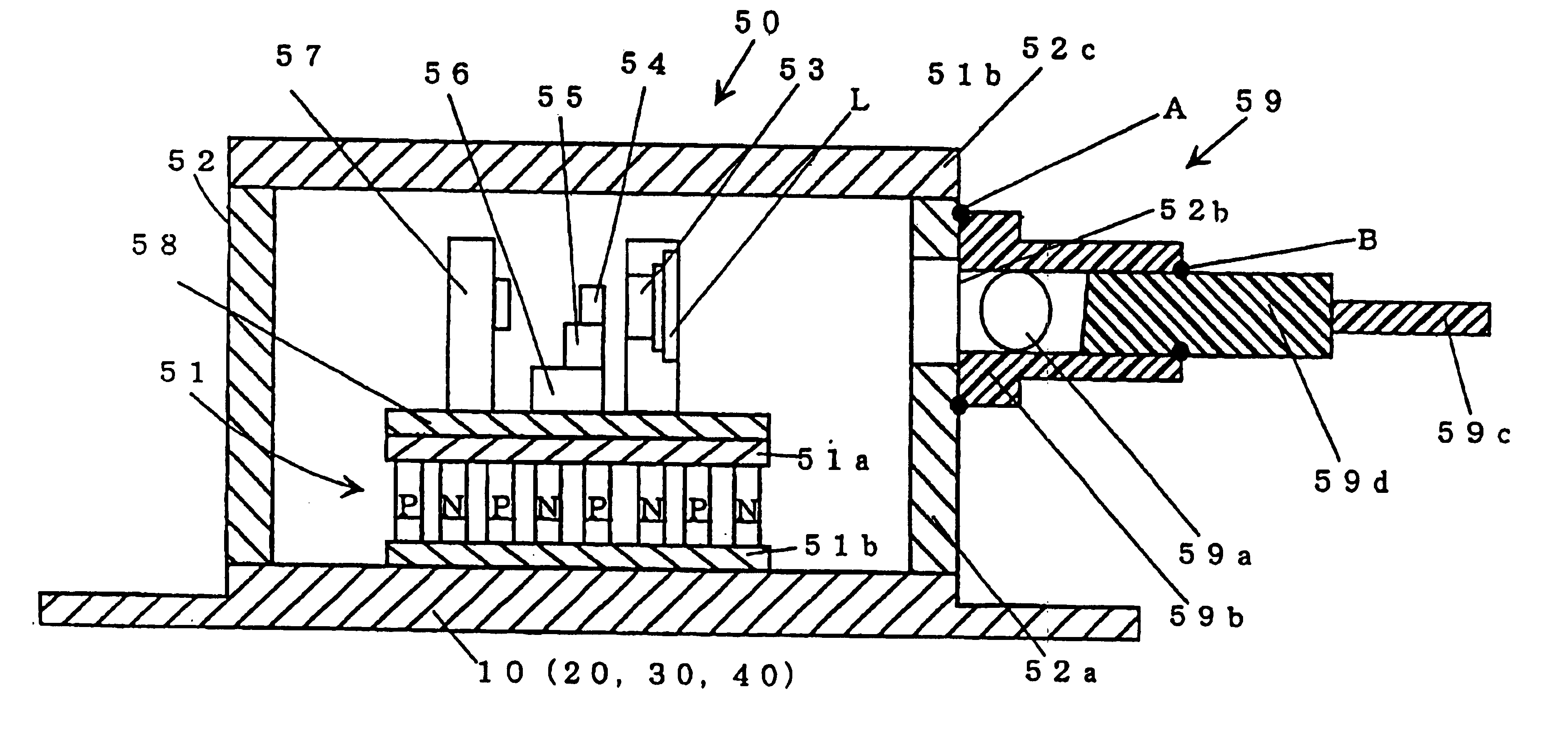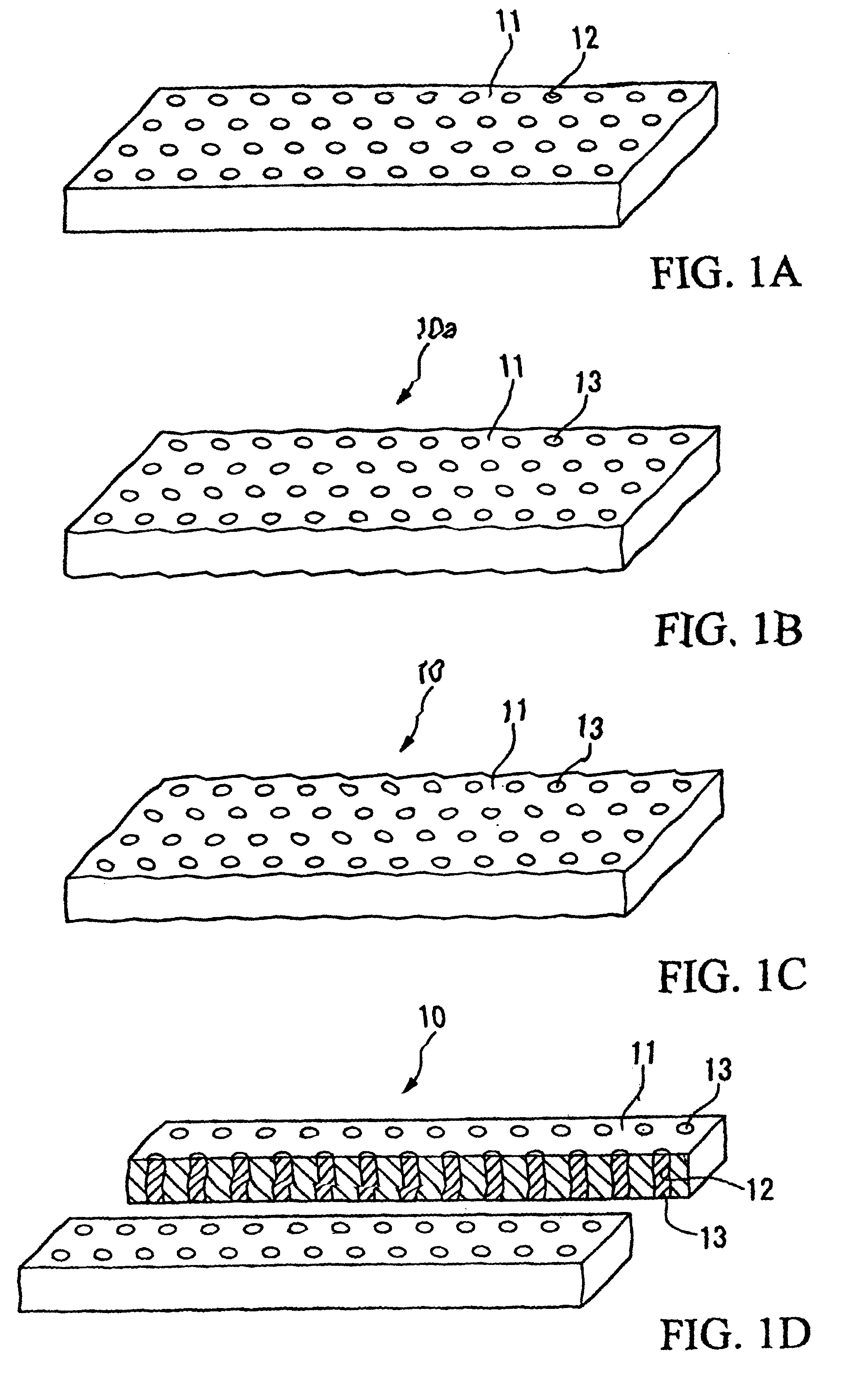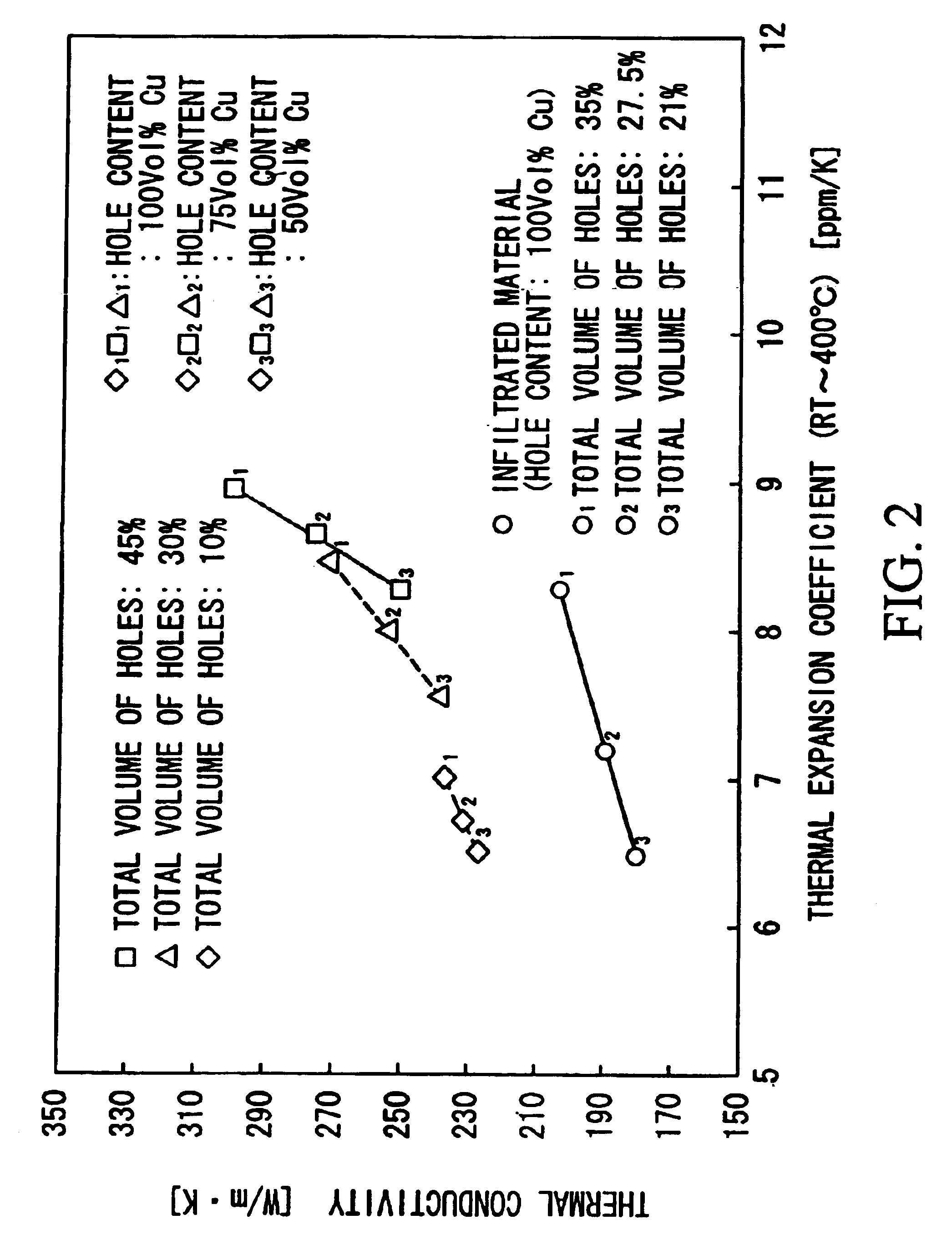Heat radiator for electronic device and method of making it
- Summary
- Abstract
- Description
- Claims
- Application Information
AI Technical Summary
Benefits of technology
Problems solved by technology
Method used
Image
Examples
first modified example
(1) First Modified Example
[0083]The first modified example provides a heat radiator 20 shown in FIG. 9A in which ‘rectangular’ through holes 22 (or 26) whose horizontal shape is rectangular are uniformly dispersed over the surface of a tungsten-rich base substrate 21 composed of Cu—W (or a tungsten board 25). The through holes 22 (or 26) are filled with copper-rich filler materials 23 composed of Cu—W (or copper materials 27) by infiltration. The horizontal shape of the through holes 22 (or 26) is not necessarily limited to the rectangular shape; hence, it is possible to employ other shapes such as elliptical shapes, triangular shapes, and polygonal shapes in accordance with the use of the heat radiators.
second modified example
(2) Second Modified Example
[0084]The second modified example provides a heat radiator 30 shown in FIG. 9B in which ‘circular’ through holes 32 (or 36) whose horizontal shape is circular are irregularly dispersed over the surface of a tungsten-rich base substrate 31 composed of Cu—W (or a tungsten board 35). The through holes 32 (or 36) are filled with copper-rich filler materials 33 composed of Cu—W (or copper materials 37) by infiltration. The horizontal shape of the through holes 32 (or 36) is not necessarily limited to the circular shape; hence, it is possible to employ other shapes such as elliptical shapes, rectangular shapes, and polygonal shapes in accordance with the use of the heat radiators.
third modified example
(3) Third Modified Example
[0085]The third modified example provides a heat radiator shown in FIG. 9C in which ‘linear’ through holes or channels 42 (or 46) are formed in a radial manner extending from the center to the periphery over the surface of a tungsten-rich base substrate 41 composed of Cu—W (or a tungsten board 45). Such linear through holes 42 (or 46) radially formed over the surface are filled with copper-rich filler materials 43 composed of Cu—W (or copper materials 47) by infiltration.
6. Application for Heat Radiators
[0086]Next, an example of application for the heat radiator(s) will be described with reference to FIG. 10, which shows an internal mechanism or structure of a semiconductor laser module using heat radiators of this invention. The semiconductor laser module is constructed by integrally storing semiconductor laser elements and a lens in a package, which is connected to an optical fiber to configure an optical amplifier.
[0087]In the semiconductor laser module,...
PUM
| Property | Measurement | Unit |
|---|---|---|
| Temperature | aaaaa | aaaaa |
| Diameter | aaaaa | aaaaa |
| Diameter | aaaaa | aaaaa |
Abstract
Description
Claims
Application Information
 Login to View More
Login to View More - R&D
- Intellectual Property
- Life Sciences
- Materials
- Tech Scout
- Unparalleled Data Quality
- Higher Quality Content
- 60% Fewer Hallucinations
Browse by: Latest US Patents, China's latest patents, Technical Efficacy Thesaurus, Application Domain, Technology Topic, Popular Technical Reports.
© 2025 PatSnap. All rights reserved.Legal|Privacy policy|Modern Slavery Act Transparency Statement|Sitemap|About US| Contact US: help@patsnap.com



